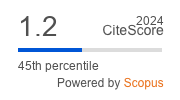Development of a technology for a combined hepatoprotective agent
https://doi.org/10.33380/2305-2066-2025-14-4-2194
Abstract
Introduction. Hepatoprotectors are one of the broad drug groups used in complex therapy at different stages of liver damage. In clinical practice, hepatoprotective agents are used in form of individual or combined drugs. A combined drug is defined as a preparation containing two or more active biological substances that act together in the human body to prevent and treat diseases or to restore and maintain health. Combined drugs are used to increase the treatment effectiveness, reduce side effects, simplify medication intake, or help to treat multiple symptoms at the same time. Often the following well-known hepatotropic agents are most studied and used in combinations: essential phospholipids, glycyrrhizic acid, ursodeoxycholic acid and silymarin. It should be noted that although the pharmacological action of ursodeoxycholic acid and milk thistle preparations has been well studied, no technological research has been conducted to create combined medicines based on them.
Aim. Development of a technology for a combined hepatoprotective agent in form of solid enteric-soluble gelatin capsules with granules containing ursodeoxycholic acid and milk thistle dry extract in form of a solid dispersion system as active substances.
Material and methods. Ursodeoxycholic acid and the solid dispersion system of milk thistle dry extract are included as substances in the formulation of the combined hepatoprotective drug. Solid intestinal-soluble gelatin capsules were filled with granules containing a solid dispersion system of milk thistle dry extract and ursodeoxycholic acid using a ProFiller 3600 desktop manual capsule filling machine, capsule size "2". 3 series of solid gelatin capsules with granules were developed. The capsules standardization was carried out in accordance with the State Pharmacopoeia of the Russian Federation XV edition. The following indicators were determined: description, authenticity, quantitative content of the amount of flavolignans in terms of silybin, quantitative content of ursodeoxycholic acid, mass uniformity of dosage forms, disintegration and dissolution.
Results and discussion. The granules formulation was developed by wet granulation, microcrystalline cellulose as disintegrator, magnesium stearate as lubricant, and 5 % aqueous solution of potato starch were used as excipients. The obtained formulations were compared in terms of quality and technological properties. It was found that granules containing microcrystalline cellulose have the best technological properties, such as weight loss during drying, hygroscopicity, bulk density, Carr index, Hausner coefficient, flowability. For capsules with granules, quality indicators were determined and standardized according to the POA (pharmacopeia official article) "Capsules" in terms of quality indicators: description, authenticity, quantitative content of the amount of flavonoids in terms of silybin, quantitative content of ursodeoxycholic acid, mass uniformity of dosage forms, disintegration and dissolution. When performing the "Dissolution" test, the release of silybin and UDCA was determined in 30, 45 and 60 minutes. The release of silybin was monitored by spectroscopy at a wavelength of λ = 289 nm and the release of ursodeoxycholic acid by high–performance liquid chromatography (HPLC) in accordance with the US pharmacopoeia, USP 44 – NF 39. It was determined that 89.0 ± 0.5 % of silybin was released in 45 minutes, during which time 97.0 ± 0.3 % of ursodeoxycholic acid was released.
Conclusion. The granules formulation with a solid dispersion system of milk thistle dry extract and ursodeoxycholic acid has been developed. Microcrystalline cellulose is used as disintegrant, magnesium stearate as lubricant, and 5% aqueous solution of potato starch as binder. The technological properties of the granules and quality indicators are determined. The technology of intestinal-soluble capsules filled with granules has been developed. The quality indicators were determined and standardized according to quality indicators: description, authenticity, quantitative content of the amount of flavonoids in terms of silybin (by UV spectroscopy), quantitative content of ursodeoxycholic acid (by HPLC), mass uniformity of dosage forms, disintegration and dissolution. The releasing profiles of the active pharmaceutical substance from enteric capsules were studied and it was found that 89.0 ± 0.5 % of the amount of flavolignans in terms of silybin and 97.0 ± 0.3 % of ursodeoxycholic acid were released by 45 minutes, respectively, which meets the requirements of the State Pharmacopoeia of the Russian Federation XV edition.
About the Authors
I. E. KauhovaRussian Federation
14A, Professora Popova str., Saint-Petersburg, 197022
O. N. Abrosimova
Russian Federation
14A, Professora Popova str., Saint-Petersburg, 197022
B. A. Perez
Russian Federation
14A, Professora Popova str., Saint-Petersburg, 197022
N. Y. Sipkina
Russian Federation
14A, Professora Popova str., Saint-Petersburg, 197022
E. K. Novikova
Russian Federation
14A, Professora Popova str., Saint-Petersburg, 197022
I. E. Smekhova
Russian Federation
14A, Professora Popova str., Saint-Petersburg, 197022
A. L. Marchenko
Russian Federation
14A, Professora Popova str., Saint-Petersburg, 197022
References
1. Okovityi S. V., Raikhelson K. L., Prikhodko V. A. Combined hepatoprotective pharmacotherapy for liver disease. Experimental and Clinical Gastroenterology. 2022;(7):5–20. (In Russ.) DOI: 10.31146/1682-8658-ecg-203-7-5-20.
2. Pljevljakušic D., Bigović D., Janković T., Jelačić S., Šavikin K. Sandy Everlasting (Helichrysum arenarium (L.) Moench): Botanical, Chemical and Biological. Frontiers in Plant Science. 2018;9:1123. DOI: 10.3389/fpls.2018.01123.
3. Gillessen A., Schmidt H. H.-J. Silymarin as Supportive Treatment in Liver Diseases: A Narrative Review. Advances in Therapy. 2020;37(4):1279–1301. DOI: 10.1007/s12325-020-01251-y.
4. Aziz M., Saeed F., Ahmad N., Ahmad A., Afzaal M., Hussain S., Mohamed A. A., Alamri M. S., Anjum F. M. Biochemical profile of milk thistle (Silybum Marianum L.) with special reference to silymarin content. Food Science & Nutrition. 2020;9(1):244–250. DOI: 10.1002/fsn3.1990.
5. Chen Q., Hu A., Ma A., Jiang F., Xiao Y., Chen Y., Huang R., Yang T., Zhou J. Effectiveness of Prophylactic Use of Hepatoprotectants for Tuberculosis Drug-Induced Liver Injury: A Population-Based Cohort Analysis Involving 6,743 Chinese Patients. Frontiers in Pharmacology. 2022;13:813682. DOI: 10.3389/fphar.2022.813682.
6. Girish C., Pradhan S. C. Hepatoprotective activities of picroliv, curcumin, and ellagic acid compared to silymarin on carbon–tetrachloride–induced liver toxicity in mice. Journal of Pharmacology and Pharmacotherapeutics. 2012;3(2):149–155. DOI: 10.4103/0976-500X.95515.
7. Torres González L., Waksman Minsky N., Muñoz Espinosa L. E., Salazar Aranda R., Pérez Meseguer J., Cordero Pérez P. In vitro assessment of hepatoprotective agents against damage induced by acetaminophen and CCl 4 . BMC Complementary and Alternative Medicine. 2017;17(1):39. DOI: 10.1186/s12906-016-1506-1.
8. Yang L., Liu Q., Zhang H., Wang Y., Li Y., Chen S., Song G., Ren L. Silibinin improves nonalcoholic fatty liver by regulating the expression of miR-122: An in vitro and in vivo study. Molecular Medicine Reports. 2021;23(5):335. DOI: 10.3892/mmr.2021.11974.
9. Ou Q., Weng Y., Wang S., Zhao Y., Zhang F., Zhou J., Wu X. Silybin Alleviates Hepatic Steatosis and Fibrosis in NASH Mice by Inhibiting Oxidative Stress and Involvement with the Nf–κB Pathway. Digestive Diseases and Sciences. 2018;63(12):3398–3408. DOI: 10.1007/s10620-018-5268-0.
10. Christodoulou E., Kechagia I.-A., Tzimas S., Balafas E., Kostomitsopoulos N., Archontaki H., Dokoumetzidis A., Valsami G. Serum and tissue pharmacokinetics of silibinin after per OS and I.V. administration to mice as a HP–β–CD lyophilized product. International Journal of Pharmaceutics. 2015;493(1–2):366–373. DOI: 10.1016/j.ijpharm.2015.07.060.
11. Safarpour S., Safarpour S., Moghadamnia A. A., Kazemi S., Ebrahimpour A., Shirafkan F. The protective effects of silymarin nanoemulsion on 5-fluorouracil-induced gastrointestinal toxicity in rats. Saudi Pharmaceutical Journal. 2023;31(8):101672. DOI: 10.1016/j.jsps.2023.06.005.
12. Perez B. A., Kauhova I. E., Terninko I. I., Abrosimova O. N., Vishnyakov E. V., Pivovarova N. S. Development of solid dispersion system from milk thistle dry extract by solvent method. Drug development & registration. 2025;14(1):151–159. (In Russ.) DOI: 10.33380/2305-2066-2025-14-1-1971.
13. Peres B. A., Procyuk A. P., Zelencova A. B., Kauhova I. E., Aroyan M. V., Novikova E. K. Development of Technology of Phytosubstantiation of Silybum marianum L. Fruits as a Component of Complex Therapy of Liver Diseases. Drug development & registration. 2023;12(4):101–110. (In Russ.) DOI: 10.33380/2305-2066-2023-12-4-1582.
14. Sharma A., Nagalli S. Chronic Liver Diseases. Florida: Stat-Pearls Publishing; 2023.
Supplementary files
|
|
1. Графический абстракт | |
| Subject | ||
| Type | Исследовательские инструменты | |
View
(1MB)
|
Indexing metadata ▾ | |
Review
For citations:
Kauhova I.E., Abrosimova O.N., Perez B.A., Sipkina N.Y., Novikova E.K., Smekhova I.E., Marchenko A.L. Development of a technology for a combined hepatoprotective agent. Drug development & registration. 2025;14(4):90-100. (In Russ.) https://doi.org/10.33380/2305-2066-2025-14-4-2194










































